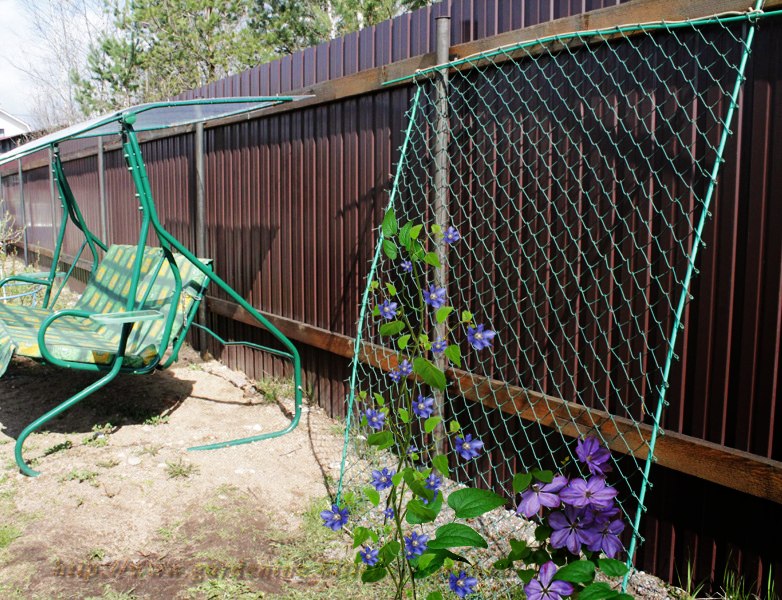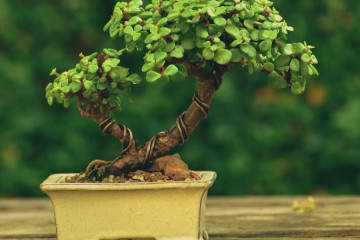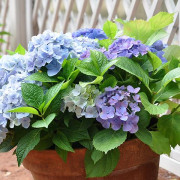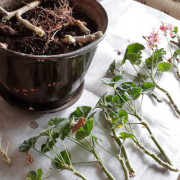Support for clematis with your own hands - ideas for coasters
Content:
Clematis is often used to decorate the garden. It is a liana with beautiful flowers, which originally wraps around a nearby support. To make it look beautiful on the site, you need a support for clematis.
Why do you need a support for clematis
It is not so difficult to make a support for clematis with your own hands. It is only necessary to prepare some materials and allocate a small amount of time.
Features of growing clematis
The plant in question does not tolerate transplantation. In this regard, clematis in the country must be immediately planted in a permanent place. You need to plant the plant in May-June.
The best places for clematis
Wet and waterlogged soil types are not suitable for the flower. Therefore, they should not be planted in places where water stagnates or precipitation drips from the roof. In such areas, the vine will become infected with the fungus and die. Another unsuitable place is next to large trees. The vine has huge roots, so it will begin to compete with its neighbor in the area and will die in an unequal struggle.
Clematis loves the sun, and the root system grows well in the shade. For these reasons, stunted flowers or ornamental herbaceous plants are planted next to the liana.
Why does clematis need support
The flower can grow up to 4 m in length. For this reason, a stand for clematis is imperative. Without it, the vine will not be able to grow. The bush is very large and can fall to the ground under its own weight.
There are other factors that require a trellis for clematis:
- the plant looks much better upright. To design beautiful compositions, designers use only supports;
- the support will effectively fix the climbing bush. Thanks to her, various slugs and snails that can harm the plant will not start on it;
- taking care of clematis, which is fixed on a support, will be much easier. It will be easy for the owner to water it, spray it, apply fertilizer, and also prune it if necessary;
- support and clematis will make it possible to make a cozy place where you can hide well from the hot sunlight.
A stand for clematis must meet certain requirements:
- should be strong, comfortable to fix the flower shoots on it. In winter and autumn, the leaves will fall off, and only a bare trellis will remain;
- the material of the supports can be wood and metal. You can also use meshes of different configurations, pillars and arches;
- the grilles are made of wooden planks. Their thickness should be up to 5 cm.
Purpose and options for using trellis for clematis in landscape design
Possible interesting ideas:
- design in the form of lattice windows and the roof of the gazebo. A green plant will create an original and beautiful effect of a green tent;
- a green fence will hide the ugly and boring walls of the country house;
- you can build pyramids near the fence, in the corners of the garden or around the perimeter;
- installation of trellises near a swing or bench. They will create a green roof effect;
- the plant can decorate the arch above the entrance or build several pergolas and create a unique green tunnel;
- the trellis can be made in the form of unique shapes.
Varieties of supports and materials for their self-production
There are a wide variety of clematis supports. It is required to analyze each of them and choose the best one.
Support material
A clematis support can be made from a wide variety of materials. It is permissible to apply unnecessary residues after repairs. What material can be taken:
- parts made of wood (slats, boards);
- wood that has not been processed (twigs, vines, branches, etc.);
- metal parts (pipes, fittings);
- mesh of various types (metal chain-link, plastic mesh);
- materials with good flexibility (wire, cord, fishing line);
- old doors and windows;
- various unnecessary parts (wheels, cot parts, etc.).
Arched structure
The metal arch for clematis is the most resistant and durable. It can withstand even the most massive bush.
In specialized stores, ready-made beautiful designs are sold. However, their price is high. It is possible to weld the structure with your own hands, but this requires a welding machine and certain skills.
Wooden pergola
A pergola is a canopy that is placed vertically or horizontally. It is made in the form of a lattice of thin wooden slats. She is often decorated with gazebos. It can be made of one or more frames, which are made in the form of a lattice. It can be mounted on the wall or installed as an independent structure on the site. At the pergola, the side parts are sheathed between the pillars, and a roof is installed on top.
Types of supports
The most common types of supports for clematis in a summer cottage are described below.
Hedge decoration
Trellises are made in the form of a hedge and dug into the garden.
Rebar arch
The simplest option is a reinforcement arch. It consists of two curved metal rods. The rings between them are fasteners. No welding machine is required to create.
Wooden pergola
This type of construction is a popular holder among gardeners. It can be attached to the wall and used as a stand-alone piece. The best option is to create a pergola from two wooden frames. The size is selected at your discretion, depending on where the structure will be installed.
Wall trellis
The second most popular type of structures for clematis is a wall trellis support. It is easy to make, and it looks very impressive. The main thing is that its slats are not very thick and wide. The most suitable size is 40 × 10 mm.
The cells of the structure must freely pass the plant, therefore, the dimensions are needed at least 5 × 5 cm.However, they should not be made too large either, since clematis will not be able to cling to the petioles. The largest cell size is 20 × 20 cm. The most common version of the trellis is in the form of a frame with slats.
Flower tripod
Vines grow well on pyramidal tripods. They can be made from cane or twigs.Legs are made first. From above, they must converge at one point to form a pyramid. The legs are fastened together with crossbars.
How to make a support
If there is a desire and time, designs for clematis can be made with your own hands. The main thing is to choose the right material.
Creating a support for clematis from a chain-link mesh
Support from a mesh netting is the simplest and most economical way. However, it looks no less impressive than other options. For manufacturing, you will need the following materials:
- mesh netting of the required size;
- metal wire;
- plastic supports;
- electrical cable;
- pliers and screwdriver.
The hardest part is stretching the mesh, as it gets tangled easily. For the manufacture of this structure you will need:
- Divide the cable into two parts, put them parallel to each other to the width of the mesh. Secure these parts.
- Place two supports on the sides, and one on top of the net.
- Secure the connecting points with thin wire.
- The support is installed in the required place. This is usually next to the fence.
- The legs are dug into the ground.
- The top is leaned against the support and fixed with screws.
Rebar arch
To make this structure, you must do the following:
- A pair of rebar rods, which are of the same length, are bent in the form of an arch using a vice.
- Metal crossbars are attached to the rods using screws.
- The arch is painted.
- The chain-link is cut off from the mesh so that its width does not exceed the arch.
- The edges of the mesh are folded over and secured.
- The finished structure is deepened 40 cm into the ground.
Wooden planks for wall decoration
A wall pergola made of wood can be 3-3.5 m high. It is permissible to decorate all the walls of the house with it. The most important thing is to properly fix the slats to the wall. To do this, you need to drill holes and hang the slats using dowels. Vertical slats of various lengths are reinforced from above. Step 10-15 cm.
How to tie up clematis so that it curls beautifully along the support
Many people wonder how to tie up clematis so that it effectively and beautifully braids the support. The flower must be tied evenly. The garter is made in one layer. Light must pass freely to all parts of the bush. In the process, twine or raffia is used.
Clematis is a plant that is often used to decorate the garden. For this liana, support as a support is imperative so that it develops well and looks spectacular. The support can be bought ready-made in the store or made by hand. How to do this was described above.





















